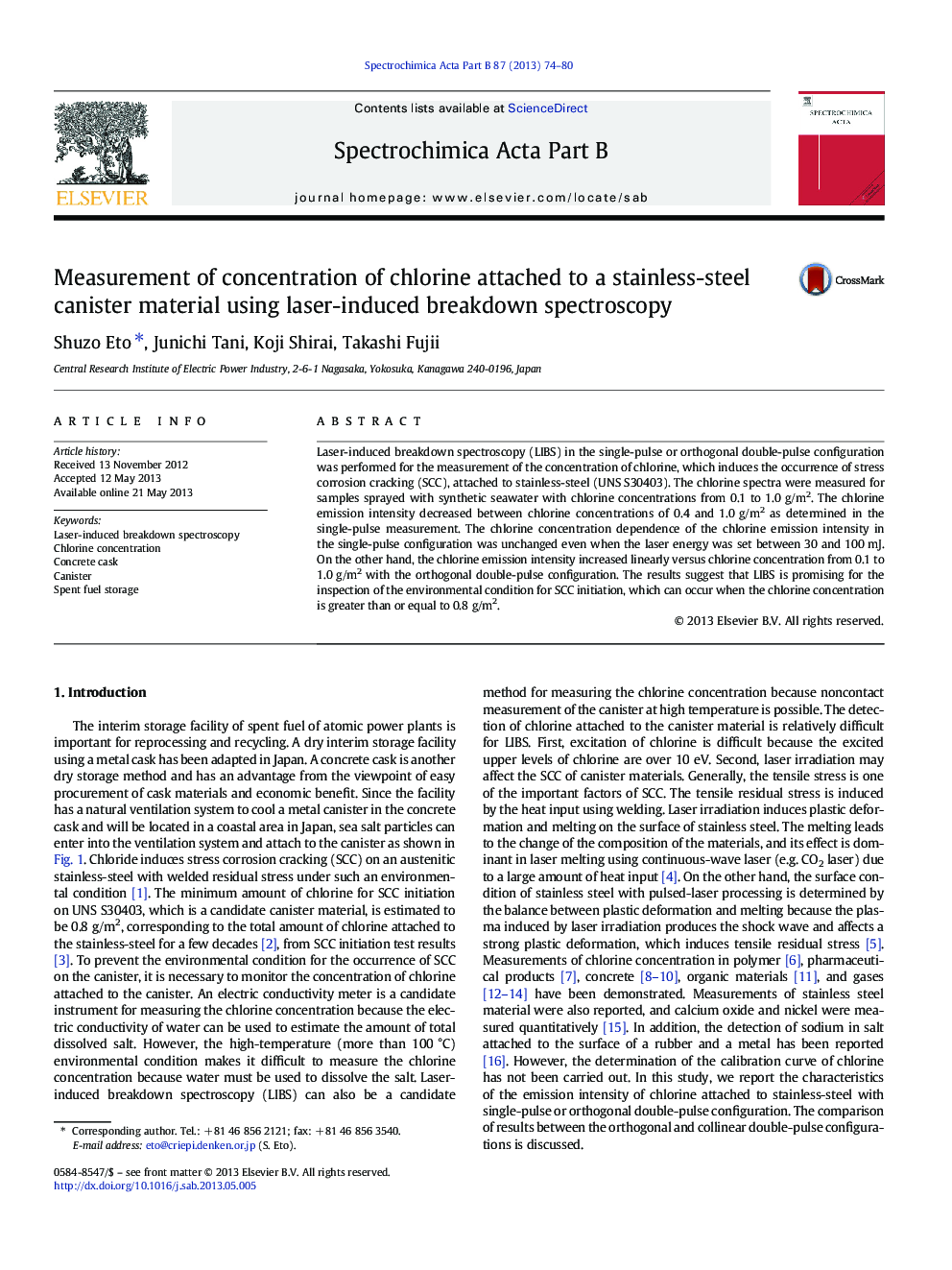| Article ID | Journal | Published Year | Pages | File Type |
|---|---|---|---|---|
| 1239913 | Spectrochimica Acta Part B: Atomic Spectroscopy | 2013 | 7 Pages |
•We studied the characteristics of emission of chlorine attached on a metal by LIBS.•Chlorine emission intensity decreased versus chlorine concentration.•Orthogonal double-pulse measurement is effective to enhance chlorine emission.•We compare performances of orthogonal and collinear double-pulse configurations.
Laser-induced breakdown spectroscopy (LIBS) in the single-pulse or orthogonal double-pulse configuration was performed for the measurement of the concentration of chlorine, which induces the occurrence of stress corrosion cracking (SCC), attached to stainless-steel (UNS S30403). The chlorine spectra were measured for samples sprayed with synthetic seawater with chlorine concentrations from 0.1 to 1.0 g/m2. The chlorine emission intensity decreased between chlorine concentrations of 0.4 and 1.0 g/m2 as determined in the single-pulse measurement. The chlorine concentration dependence of the chlorine emission intensity in the single-pulse configuration was unchanged even when the laser energy was set between 30 and 100 mJ. On the other hand, the chlorine emission intensity increased linearly versus chlorine concentration from 0.1 to 1.0 g/m2 with the orthogonal double-pulse configuration. The results suggest that LIBS is promising for the inspection of the environmental condition for SCC initiation, which can occur when the chlorine concentration is greater than or equal to 0.8 g/m2.
